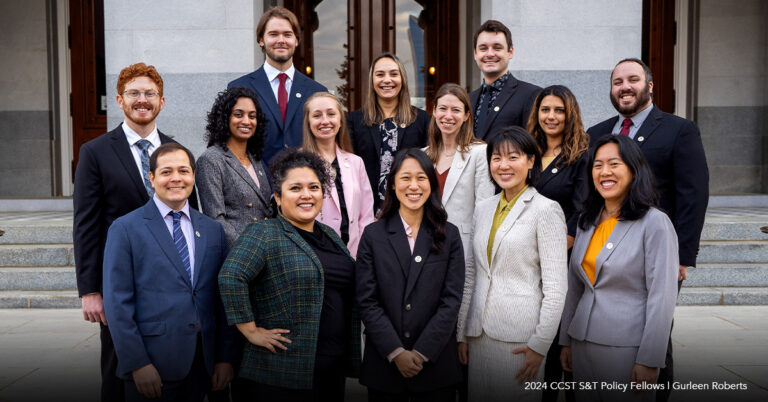Update: Applications for the CCST Science & Technology Policy Fellowship Have Closed
CSI-Net Gains Director, Moves Forward
October 13, 2009 | CCST Newsroom | Contact: Aleta Watson
The movement to improve science, technology, engineering and math (STEM) education in the Golden State took an important step forward in September when Stephanie Couch began work as the project director of the nascent California STEM Innovation Network (CSI-N).
Couch brings a strong background in education policy and advocacy to the job of building a statewide network to prepare every child to live and work in a world increasingly driven by science and technology. She’s the former director of communications, outreach and collaboration for the California Education Technology Collaborative. In that position, she nurtured partnerships among schools and colleges throughout the state with the aim of finding new ways to advance education through technology. STEM was a large part of that work.
“We’ve got to find ways of using technology to leverage the good things we have,” Couch says. “That’s what’s exciting to me about this initiative. I see all of these people who have good ideas coming together under one umbrella to try to make a difference in education in the state.”
CSI-N is the outgrowth of a yearlong project to design a new blueprint for STEM instruction in the nation’s most populous state. The project is a joint venture of California Polytechnic State University and the California Council on Science and Technology (CCST), working in partnership with The Center for the Future of Teaching and Learning (CFTL), the Bill & Melinda Gates Foundation and the S.D. Bechtel, Jr. Foundation. Work began last fall when the Gates Foundation engaged Cal Poly to prepare a new plan for STEM education in California. The search for ideas led to months of discussions with opinion leaders, policymakers, researchers, business executives, and educators. Between February and April, leading figures in the field came together at high level symposia designed to gather the best thinkers on the topic. Focus groups were conducted with business executives as well as classroom teachers.
Couch says the next step is to craft a blueprint describing the organization’s goals, initial strategies, partnerships and methods of assessing progress. The document is envisioned as a common reference point for participants in the network. Plans call for bringing together a small group of experts to draft a “straw man” report – sketching out ideas for the blueprint – to take to a summit meeting of some 30 influential policy leaders after the first of the year. The network is expected to launch next spring.
“I think what we need is a starting place and a very flexible plan for how we’re going to move forward for the next three to four years,” Couch says. “But we have to be very nimble because things change very rapidly in this state. We don’t want to create anything that’s cast in stone.”






